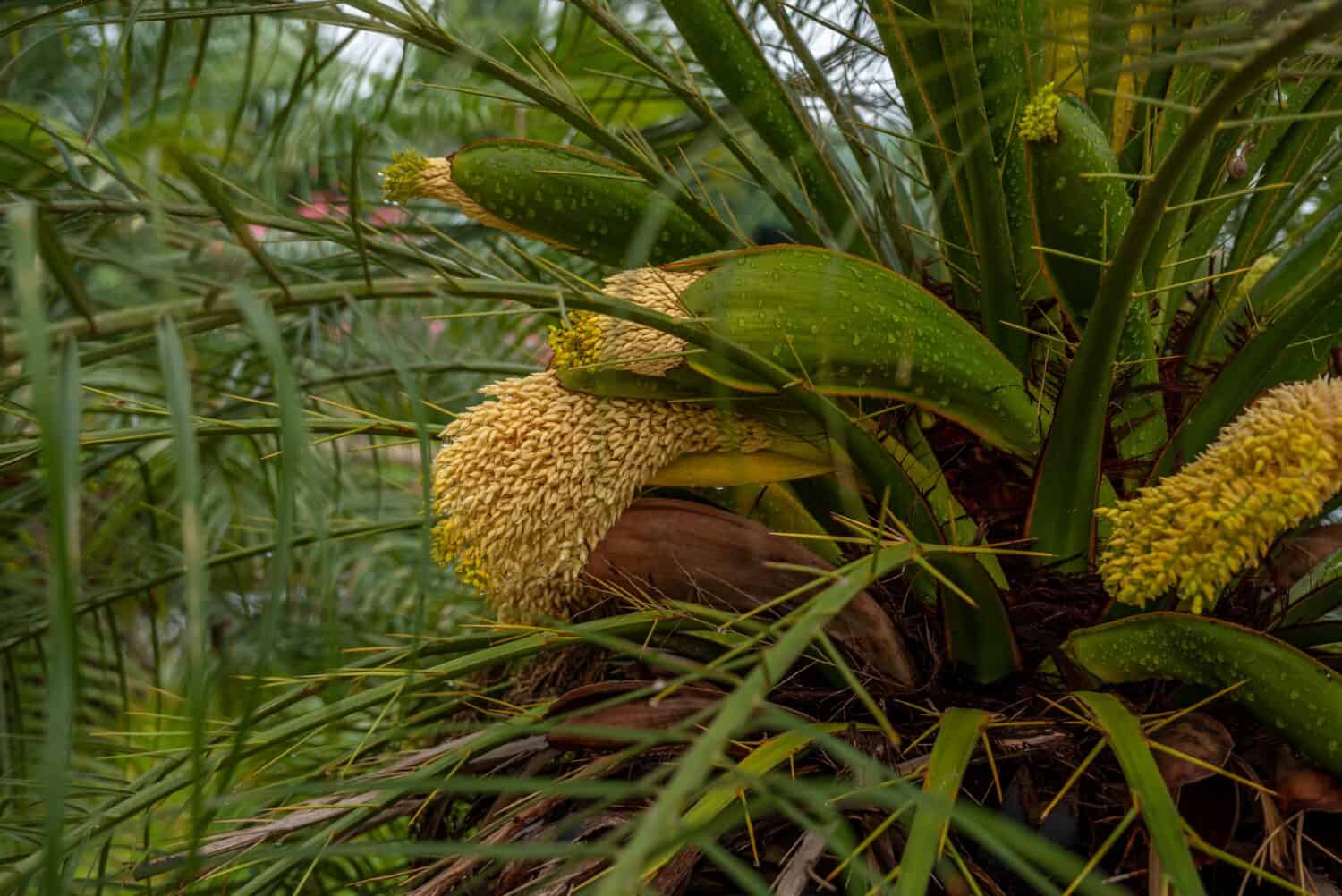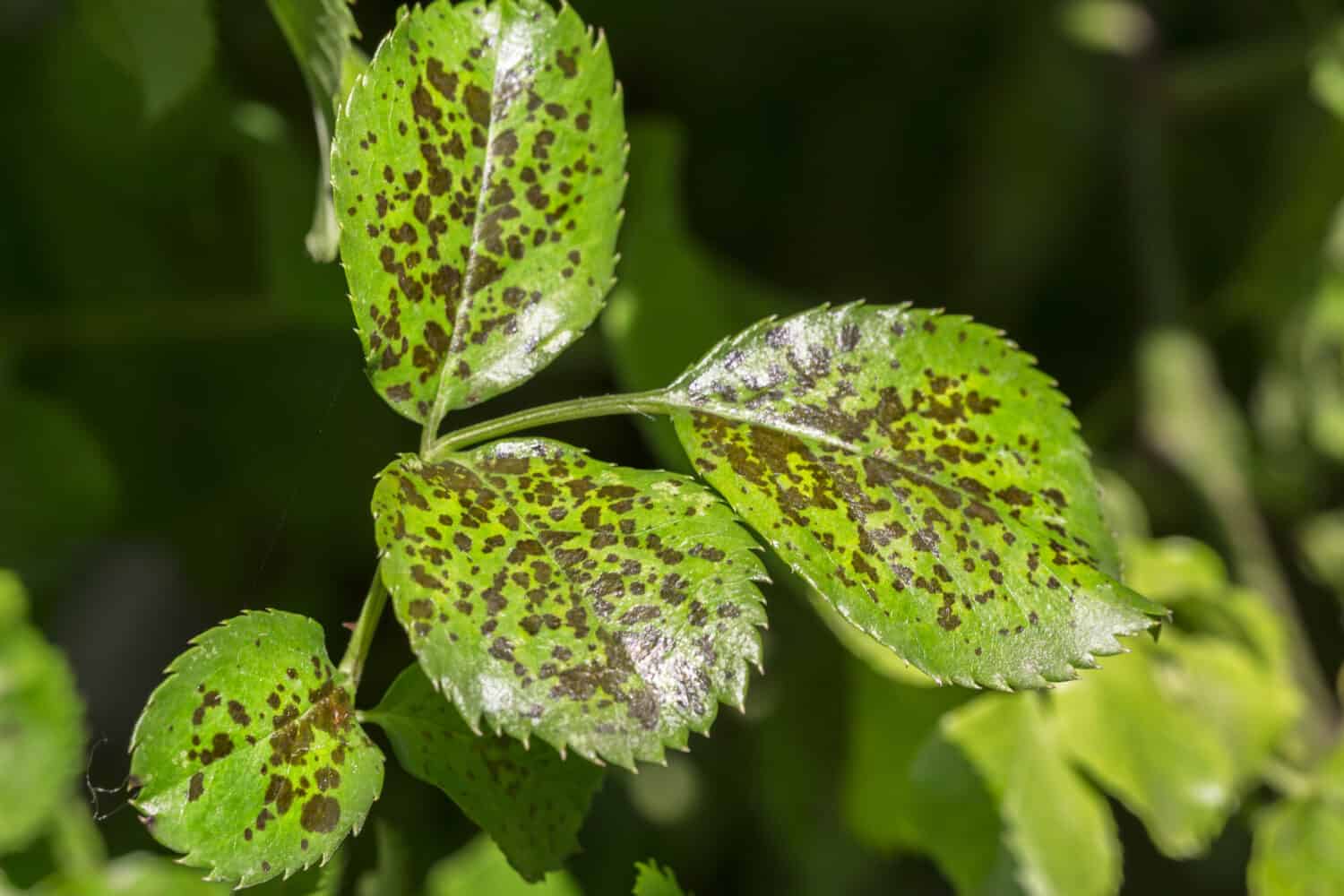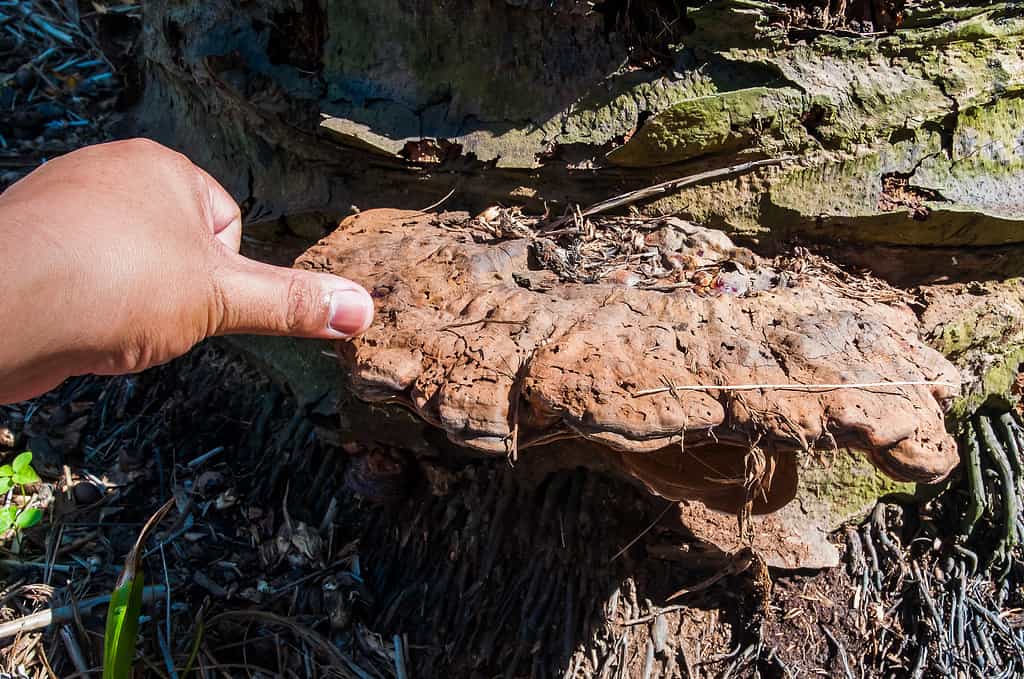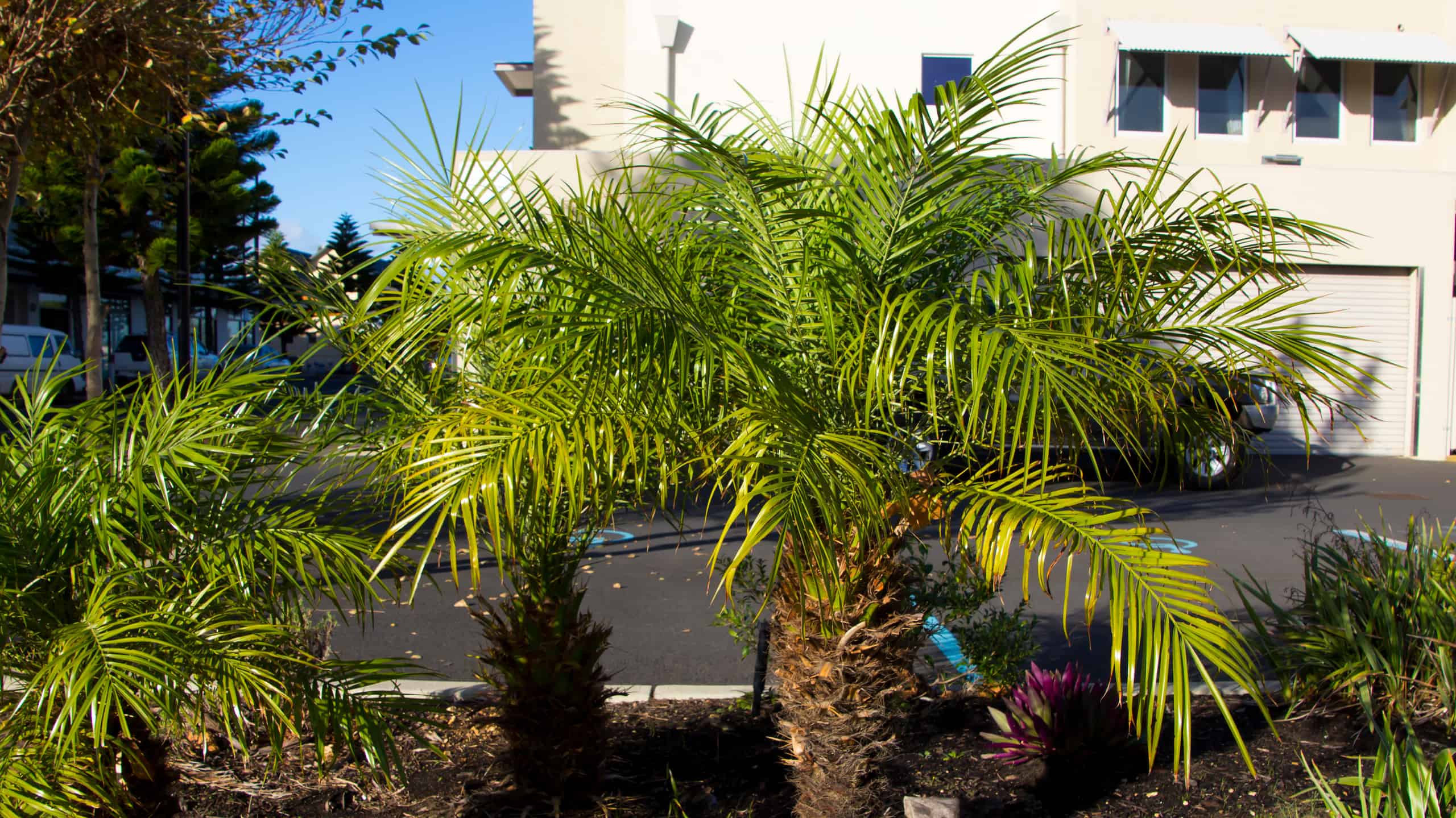Looking for a small, versatile palm to add a tropical feel to your home’s landscape? The Robellini palm may be a great fit for you. Its gorgeous, textured trunk and graceful, arching fronds provide not only visual interest but also shade, helping to create a relaxing atmosphere wherever they grow. While this species of palm does best outside in warm climates, it can grow just as well in a container that can move indoors in temperate areas.
If you’d like to grow a Robellini palm of your own, then the information in this guide will help you start on the right foot. Below, we’ll talk about where this palm is from and how it grows. We’ll also lay out some guidelines to help you build a care routine that will keep your plant happy and healthy.
| Robellini Palm Tree | |
|---|---|
| Botanical Name | Phoenix roebellenii |
| Common Name | Robellini palm, pygmy date palm |
| Sunlight | Full sun, partial sun. |
| Water | Soil should be kept moist. Fairly drought resistant. |
| Soil Conditions | Adaptable to a wide variety of soil types. Does not tolerate salt spray on leaves or soil. Nutrient deficiencies are common in weathered soils that are overly rocky or sandy. |
| Hardiness | USDA zones 10 and 11 |
| Beginner Friendly? | Yes, easy to grow. Watch for nutrient deficiencies. |
| Indoors or Outdoors? | Both. Great indoor palm. |
What Is a Robellini Palm?

Robellini palm trees are commonly used in landscaping in tropical and subtropical regions.
©Olha Solodenko/Shutterstock.com
The Robellini palm, also known as the pygmy date palm, is a species of true palm that is native to southeastern Asia, from southern China to Laos and Vietnam. It is commonly used in landscaping across the tropical and subtropical regions of the world. Because of its small size, it can perform well in tight spaces where larger palm species would be imposing.
When grown outdoors, members of this species will usually reach heights of around 12 feet. Indoors, however, they tend to cap out at around half that height.
This solitary palm produces a single, highly textured, and ornamental trunk that is covered in brown or grey-brown bark. Oftentimes, growers plant multiple young palms tightly together or even in a single hole. As the young palms grow together, they begin to resemble a multi-trunked palm species. While this can create an appealing aesthetic, it may lead to competition between individuals in the cluster.
The leaves, or fronds, of this palm species, are slender and graceful, and they form arching canopies that spread up to 8 feet in diameter. Each frond is pinnate, or feather-like, and consists of many small leaflets that emerge from a central rib. The petiole, or stalk, of the frond, is armed. This means that it possesses modified leaflets that take the form of sharp spines. Take care to avoid these spines as they can puncture the skin and cause dermatitis, bruising, and inflammation.
Like all evergreens, the Robellini palm slowly sheds its fronds, to make room for new growth. When a frond is dropped, it leaves a knob on the trunk where its petiole was once attached. These knobs are characteristic of this palm species and are present from the base of the trunk to the crown.
How Do Robellini Palms Reproduce?

To reproduce, Robellini palm trees must cross-pollinate.
©TamuT/Shutterstock.com
Because it is a true palm and not a cycad, the Robellini palm produces flowers instead of cones to reproduce. Palms of this species are dioecious, which means that each plant is sexually distinct and must cross-pollinate to produce viable seeds. It can take several years, usually around five, for a new plant to reach reproductive age. Until then, plants are sexually indistinguishable.
In the spring and summer, mature palms produce creamy-white, branching inflorescences, called panicles, from beneath their canopies. Each one is branching and bears a multitude of small flowers. Female palms can be distinguished from males by the successive formation of many small, bronze-colored fruits from the base of each flower. As they ripen, they will turn dark purple or black. The flesh of each fruit, although fairly thin, is edible.
How to Care For a Robellini Palm
![Phoenix roebelenii, with common names of dwarf date palm,[1] pygmy date palm, miniature date palm or robellini palm](https://a-z-animals.com/media/2023/04/shutterstock-2208839249-huge-licensed-scaled.jpg)
For as sophisticated as Robellini plants may seem, they are not difficult to grow.
©AndperfumeInd/Shutterstock.com
The Robellini palm is, in general, a low-maintenance and easy-to-grow species of palm. While you will need to pay extra attention to your palm if your soil is especially poor, caring for this species is otherwise very straightforward. The guidelines below will help you put together a care routine that will ensure that your plant has everything it needs to look and feel its best.
Sunlight
In areas that experience long, hot hours of intense summer sunshine, the Robellini palm does best when offered some shelter over the day. If this sounds like your climate, you should plant your palm in an area that receives light shading during the afternoon hours. Allowing your palm some shade helps prevent leaves and soil from quickly drying out during peak sunlight hours. Growers who live in areas with milder summers have more flexibility about planting location and should maximize the amount of light that their palm receives.
You should place an indoor palm in a location where it can receive as much bright light as possible. If you are growing your palm indoors, be sure to rotate its pot fairly regularly to ensure that all of its leaves receive regular sunlight. This will help prevent your palm from leaning toward the window. If you live in an area that experiences cold winters, make sure that your palm’s window isn’t drafty. Cold air from a draft can cause stress, harm foliage, and leave your palm more susceptible to pests and disease. It can also cause soil to dry out more quickly.
Water
Although the Robellini palm is relatively drought tolerant, it is best to maintain a regular watering schedule if possible. Ideally, you should keep your palm’s soil nice and moist year-round. Be careful not to overwater, however, as this palm does not do well in wet soil.
Because the Robellini palm is sensitive to moisture, it is important to strike a balance in your watering routine. If you’re not sure how frequently to water your palm, keep an eye on the surface of the soil. Once the top of the soil has dried out, give your plant a light soak. Avoid creating puddles — standing water deprives the soil of oxygen and stresses your plant, creating conditions that are ideal for root rot.
Soil Conditions
This species of palm is not picky about the type of soil it is grown in as long as it is well-draining. It is adaptable to a range of soil pH but will do best where the soil is slightly acidic or neutral. In terms of structure, soil that is similar to a sandy loam is ideal. This type of soil is very well draining, consisting largely of sand, but also contains enough clay and silt to provide the vital minerals that your plant needs to thrive.
Although loamy soils tend to be ideal, they are not common in developed areas and can be difficult to replicate. If you live somewhere like Florida, where the ground tends to be very sandy and weathered, you will likely want to amend your soil to help avoid deficiencies.
Probably the most important and effective addition to any soil is organic matter like compost or aged manure. You can add these to your palm’s soil in small amounts at the time of planting and can also apply them as top dressings moving forward. By adding organic matter where it is lacking, you increase your soil’s ability to retain not only water but nutrients as well. This is helpful in sandy soils where water drains quickly and nutrient density tends to be low.
Organic matter is a great amendment in areas of heavy clay or silty soils as well. Incorporating organic matter into these types of soil helps improve drainage by increasing the overall pore size of the soil. Because it helps moisture move through heavy soil, it also increases the ability of oxygen to reach your plant’s roots.
Fertilization
The Robellini palm, like many other palms, is fairly susceptible to nutrient deficiencies. In poor, sandy soils, your palm may not only struggle for potassium, but for magnesium and manganese as well. Once or twice a year, you may opt to fertilize your plant’s soil using a slow-release fertilizer that is formulated especially for palms. Be sure that your choice contains micronutrients as well. This, in addition to regular applications of organic matter like compost or well-rotted manure, should meet your palm’s nutritional needs.
One of the best things you can do to keep your palm healthy is to have your soil tested before you plant. By analyzing your soil ahead of time, you give yourself the ability to address nutrient problems before they occur. You should also pay attention to how the weather affects your chosen planting site. Planting in areas that are prone to standing water for long periods can prevent your palm from absorbing enough iron.
Additionally, you should keep your soil itself active and healthy by applying a couple of inches of mulch to any bare soil. Not only does this increase the amount of organic matter present in your soil, but it also increases the ability of your soil to retain moisture. It also shelters populations of aerobic soil microbes and macrobes that are vital to your plant’s health. These organisms are constantly breaking down organic matter into nutrient forms that your plant can use.
Pruning Your Robellini Palm

As your Robellini’s fronds begin to shed and change color to yellow or brown, refrain from removing them. Your palm is reabsorbing nutrients from the frond.
©Vipul1989/Shutterstock.com
Like all evergreens, your Robellini palm will gradually shed its fronds. As a frond becomes spent, it will begin to turn yellow or brown before eventually falling off the palm.
While you may be tempted to remove aging fronds as soon as this process begins, it is important to refrain from doing so. This discoloration is the result of your palm reabsorbing the vital nutrients, like potassium, that it has invested in producing the frond. By removing the frond prematurely, you prevent your plant from recycling these important nutrients. You also create open wounds that may attract insect pests and encourage infections. Therefore, it is crucial to remove only fronds that have died off completely.
Pests and Disease
Even with the best care, plants can become sick or damaged. While a healthy Robellini palm has a strong immune system, it is still possible that you and your plant will have to contend with pests or diseases at some point. Below, we’ll talk about a couple of infections that may affect this species of palm and describe the symptoms of each one.
First, however, it is worth noting that fronds of this palm species sometimes release a waxy substance that hardens into small, white spots. Oftentimes, new growers mistake these spots, called scurf, for an insect infestation. While scurf is harmless to your plant, a closer inspection is always a good idea — mildew and scale insects can look similar from a distance and can cause problems for your palm.
Pestalotiopsis Leaf Spot (Pestalotiopsis sp./ Pestalotia sp.)

Pestalotiopsis can infect Robellini palms. A strong care routine for your palm can help prevent this disease.
©May_Lana/Shutterstock.com
While other plant species, like the coconut palm or banana palm, may also contract this disease, it is commonly seen in Robellinis. This leaf spot infection is caused by a fungus in the genus Pestalotiopsis, usually P. palmarum, and primarily targets the palm’s leaves.
Affected leaves and petioles will begin to exhibit small yellow, black, or brown spots across their surfaces. Unlike spotting caused by potassium deficiency, these spots will gradually increase in size and begin to darken, ultimately turning gray with a bold, inky-black outline. If the disease continues to progress, the fungus can spread through the leaf tissue and into the apical meristem, or main growth point, of the palm, leading to its death.
The best way to prevent this disease is to develop a strong care routine, as the fungus requires a wounded or weakened plant to develop. Open wounds created by wind damage or premature frond removal allow fungal spores to enter your palm’s leaf and crown tissue. Leaf tissue that becomes chlorotic (yellow) or necrotic as the result of nutrient deficiency is also very susceptible to infection.
Luckily, if the infection is caught in the early stages, it can be isolated from the rest of the palm. Heavily affected leaves should be removed from the plant. Although this may seem simple, the creation of a new wound may allow a new infection to form. Additionally, severing a frond from the plant removes access to vital nutrients and can worsen a deficiency. Therefore, it is important to not only remove infected tissue but also to determine and manage the root cause of the infection. If you’re unsure about what to do, you should consult a local, experienced arborist to help you address the problem.
Ganoderma Butt Rot (Ganoderma zonatum)

is a plant pathogen that infects plants with butt rot, and like many plants, Robellini palms are susceptible to it.
©RAMLAN BIN ABDUL JALIL/Shutterstock.com
This fungal infection is caused by a species of fungus in the genus Ganoderma. Over time, the fungus degrades the lignin in the lower portion of the palm’s trunk, leading to weakness and instability. This is impossible to detect while the tree is alive, however, as the trunk still appears solid from the outside. The palm’s fronds may also begin to wilt and die back as the plant declines.
Once the fungus has thoroughly colonized the palm, it will likely produce a white and brown reproductive body, called a conk, from the base of the trunk. The presence of this conk is the only symptom that positively diagnoses the infection while the palm is still alive. Once the conk has appeared, both it and the infected tree should be promptly removed.
This particular Ganoderma species can infect all species of palms. Unfortunately, there are no specific chemical or biological prevention measures. The sooner you remove the infected palm, the less likely any surrounding palms are to become infected.
Thank you for reading! Have some feedback for us? Contact the AZ Animals editorial team.








